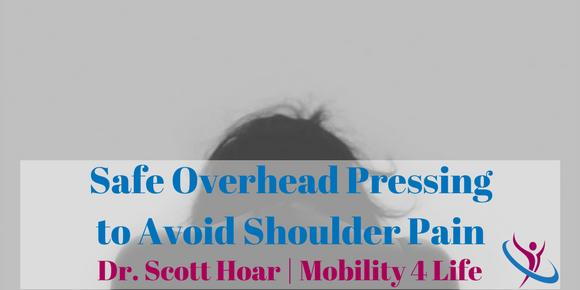
Lifting Overhead. It's one of the more highly discussed exercises an d/or modifications for people struggling with shoulder pain or past shoulder injuries, such as:
- rotator cuff tears
- labrum tears
- shoulder arthritis
- shoulder impingement
- frozen shoulder
- etc.
Many therapists recommend completely avoiding overhead movement, pointing to it as "high risk" and suggesting it's not a good idea for healthy or unhealthy shoulders. Well, as a chiropractor I've been treating shoulder injuries for the better part of a decade and have dealt with my own shoulder injuries (torn labrums, impingement, etc) for years. That's why I'm so excited to have found this exercise from Dr. John Rusin and his Functional Hypertrophy Program (use code SH10 for 10% off) in which we used these Rack Scrape Overhead Presses.
Rack Scrape Overhead Presses
Advantages:
- A safe and supported "path" for the barbell to travel up so that instabilities in the shoulder aren't exposed which could cause injury
- More balance requirements (a.k.a. strengthening your stabilizing muscles) than the Smith machine or Nautilus equipment, but not unsupported like dumbbells
The Half Kneeling Stance
Whenever it's important to have a neutral low back and pelvis, (which is just about all the time in order to prevent low back pain, sciatica, sacroiliac joint disease, etc) it's a great idea to perform exercises with one hip flexed and one leg neutral (or extended). When overhead pressing, it's extremely common for people to arch their lower back and flare their ribcage, which is a negative compensation that opens the door to the aforementioned injuries. By kneeling on one knee and having the other knee forward and bent at a 90 degree angle, it's very easy to lock in and protect your lower back and pelvis.
Be sure not to get too narrow with your stance and don't allow that front knee to travel inward (valgus collapse) to maintain proper posture of the foot, knee, and hip.
Pointers
- Don't allow the shoulders to shrug upward during the movement - at the top of the movement there should be plenty of room in between the biceps and the ears
- It's okay to slightly let the head go forward at the top of the movement, put don't go too far as that will change the stresses of the shoulder and shoulder girdle
- Alternate which foot is forward each set
- Start at a relatively light weight as you learn how to perform the movement, then work up to heavier weight as the execution becomes easier
This exercise is appropriate for when you are no longer in shoulder pain and you're looking to improve shoulder strength and control. It can be a part of a complete plan to re-strengthen your body after an injury.
So, now that you are finally lifting overhead with good posture in your core, spine, and shoulder girdle, you'll minimize risk of injury, you can start to further heal or rehabilitate your shoulder or neck, and you could even get super strong!